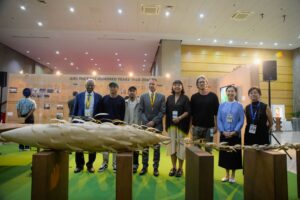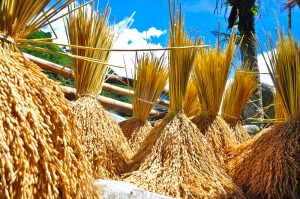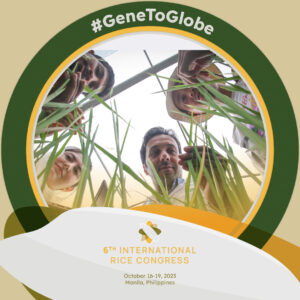
Maybe I was hallucinating but I thought I saw a pair of socks among a sea of products in the rice exhibit at the Second International Symposium on Rice and Disease Prevention in Wakayama, Japan. Upon closer inspection, my surprise was verified. It was indeed a pair of socks, made partly from rice bran.
Taking a step back and looking at the room that lay before me, I was totally dumbstruck. So many products were made completely or partially from rice.
Aside from its obvious uses for food—including flour for cakes, noodles, and other snacks—rice and its derivatives can be used to make cosmetic products, shampoo, and soaps for people, pets, and clothes.
Rice bran oil, which constitutes about 5% of the bran, is extracted and processed into healthy cooking and salad oil. Bran oil doesn’t burn easily and has a better percentage of unsaturated fats than olive oil.
Rice can be incorporated into energy drinks and added to supplementary drinks for cows to prevent calcium deficit disorders after calving.
Remarkably, rice can also be used in making packaging foam and paint, and is used in offset printing to make the process more environmentally friendly.
The derivatives of rice bran—including oryzanol, inositol, phytic acid, and ferulic acid— are the key ingredients in many of these products.
Oryzanol is a mixture of substances that includes ferulic acid and sterols and is widely used in the U.S. in sports supplements. It has been approved in Japan for the treatment of several conditions, including menopausal symptoms, mild anxiety, upset stomach, and high cholesterol.
Inositol is a sweet and naturally occurring nutrient found in different foods but mostly in cereals with high bran content. Its main role in the body is to prevent the collection of fats in the liver and help in the conversion of nutrients into energy to maintain a good metabolism. It also supports healthy hair growth.
Phytic acid is used as a chelating agent (a substance whose molecules bind to metal ions, removing them from solutions) in manufacturing and printing processes.
Ferulic acid, an antioxidant, acts against free radicals, which are implicated in DNA damage, cancer, and accelerated cell aging. Ferulic acid is also used in topical creams designed to protect the skin.
Standing amid the myriad rice products displayed at the Wakayama exhibit, it was easy to think that the income farmers get from selling plain old rice grain is miniscule compared with the cost of rice-based socks, drinks, creams, and the like. But rice will always be first and foremost a staple food—a hungry person would rather have a plate of food than the silky hair promised by rice shampoo.
Though, if I ever find myself penniless and famished, I could always eat my rice-bran socks.
_________________________________________
Mr. Hilario is the curator of the Riceworld Museum and Learning Center at the International Rice Research Institute.










